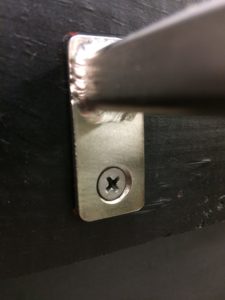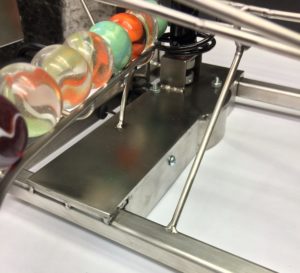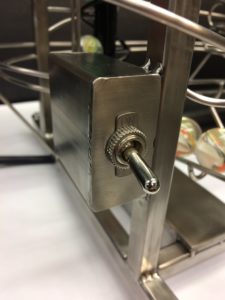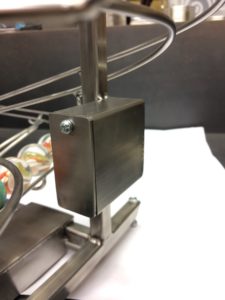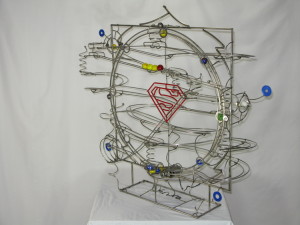So you’d love to have your own rolling ball sculpture, but you’re wondering, “How do you display those things? Do they screw to the wall? Will it hurt my table?” Great questions, and I have answers!
There are two common mounting situations for sculptures, wall mounts or free standing. A free standing sculpture rests on a horizontal surface. Free standing sculptures may be desired for several reasons. Sometimes there is no wall space available. In other situations, the sculpture might need to be moved on occasion. Additionally, the sculpture may be placed in a display case where all sides can be viewed. My sculpture “Tomfoolery” was created as a free standing piece to be placed in an existing display case at the Indianapolis Public Library, Central Branch. In that instance a free standing piece was ideal for them, because it could fit into an existing display case, eliminating the need for either purchasing or building another means of display.
For free standing rolling ball sculpture, protective feet are installed on the frame. Typically the feet are made with of stainless steel with a protective pad at their base. The stainless upper portion matches the rest of the sculpture and features a screw mount that makes it adjustable in case of an uneven display surface. The bottom of the foot has a scratch-safe pad, most often of plastic to protect the surface on which it rests. Different types of feet can be used if you desire.
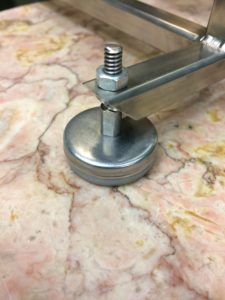
The surface mount of a free standing rolling ball sculpture is a stainless steel foot padded on the bottom to protect the surface finish.
Wall mounted sculptures are often desired when there is no available horizontal space. A wall mounted rolling ball sculpture can also create quite a stunning effect, standing out the way a painting or photo cannot. A wall mount can also offer different options for layout, acting as a sort of frame around another object or objects that are already in place, perhaps home entertainment equipment or even other artwork. A wall mounted rolling ball sculpture is fastened to the wall with standoffs that are welded to the frame, extending back toward the wall. Each standoff has a foot with a countersunk hole in it with which it can be securely screwed into the wall. No special screws are required, save what might be needed for an extremely large and heavy sculpture, say something along the lines of 10′ x 10′. If you’re commissioning a wall mounted sculpture and you want it to mount to existing studs, you would need to provide me with those measurements at the beginning of the commission so that I can position them accordingly.
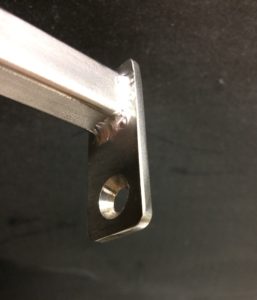
The foot mount for a wall sculpture has a drilled and countersunk hole to allow easy mounting with screws.
There may be some other mount types, such as ceiling mounts, but I’ve covered the two most common here. If you have questions about your particular mounting situation, please message me here, and I’ll get right back to you with the answers.

